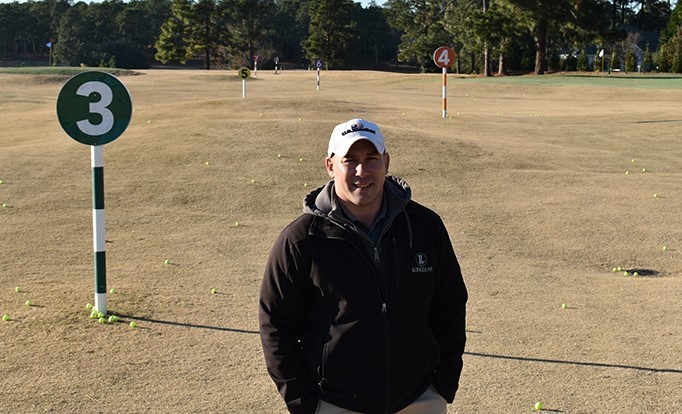The report from Dan Van Horn of Longleaf Golf & Family Club to ASGCA Foundation Symposium attendees was simple: The return on investment from additional tees was a 20 percent increase in rounds played in year 1, and another 17.5 percent increase in year 2. And Superintendent Jason Friedman’s team saw maintenance of 126 tees was “effectively net neutral.”
Golf Course Industry reports:
The Longleaf system, with seven tees per hole, was one of the stars of a recent ASGCA Foundation symposium on “Forward Tees and Other High-ROI Ideas” in Pinehurst, N.C. Along with short courses, putting courses and courses with fewer holes, speakers reported that concepts like the Longleaf system are resonating with busier and younger golfers.
“I don’t have people coming into my office telling me they play here because we have tees better suited to their game,” Friedman says. “But in the pro shop, we are hearing that people are enjoying their time on the golf course and we can see that with increased rounds.”
“We’re trying to revolutionize how kids are brought into the game,” Van Horn says. “Other sports scale their playing arena for kids.” The Longleaf system allowed those kids and their much longer-hitting dads to play the same course at the same time.
Kids may be the primary audience, but they’re not only ones attracted. “In our first year, 93 percent of rounds played by women were played on tees that did not exist on the golf course previously,” Van Horn says. “People are asking for scorecards at the end of their round because they want to take them back to their course and get the same thing introduced there.”
To keep his budget “net neutral” despite maintaining so many extra tees, Friedman made savings in two key areas. The first was in reducing heavily maintained acreage in out of play areas, about 10 acres in all that are now “sandy, natural” expanses planted in part with lovegrass, wiregrass and broomsedge. “We’re not just saving money and labor, these areas now provide a contrast and help highlight the golf course itself,” Friedman says.
He has also trimmed about eight acres of fairway mowing across the course. Many of the forward-most tees are simply rectangles mowed at tee height in what was formerly the start of fairways. Allowing the bermudagrass around them to grow to rough height, not only reduces mowing but helps distinguish the tees, which Friedman paints in winter.
It takes a total of 16 hours to mow every tee – eight yards wide by 10 yards long – twice weekly in the growing season. Friedman mows with triplex units in straight lines. He tried rounding the corners to save a little time and money, but found the inside wheel, even with no tread, was wearing and tearing the turf. “It was just too tight a turning radius so now we back up,” he says.
Scott Brown admits he “wasn’t too enthused” by the idea of installing new forward tees at Surf Golf and Beach Club in Myrtle Beach, S.C. He felt he had enough on his plate. In two years as superintendent at the club, Brown endured an ice storm, flood and greens renovation. Then, six days after reopening, Hurricane Matthew arrived, bringing a direct hit from a tornado.
“Someone’s got it in for me,” he told the symposium in Pinehurst. “Besides famine, I think I’ve got it covered!” But with significant areas on the nearly 60-year-old course opened up by resultant tree loss, the club engaged architect John LaFoy. “When he started talking about putting in forward tees, I wasn’t too enthused,” Brown says. “But I started looking at the demographics of our club.”
What he found was that just 2 percent of the membership was between the ages of 16 and 35, and about 80 percent of men were 65 years or older. “Maybe I was part of the problem,” Brown says. “They’d come to me saying they couldn’t get on the green in two on some holes, and I’d just tell them to find another tee box to play.”
You could say those aging men “saw red” at that suggestion, the red color of what they had always known as “ladies tees.” When LaFoy installed new forward tees, creating a new course option of about 4,000 yards Brown learned he could entice some of those male members forward if he painted the tee markers silver or, on some holes, a mix of half silver and half red.
“We now actually have eight different tees and combination tees to help put the fun of golf back into play,” he says. “We see kids out there now with their grandpas on same tee boxes enjoying themselves … This forward tee stuff is awesome. It’s been a real eye-opener for me.”

